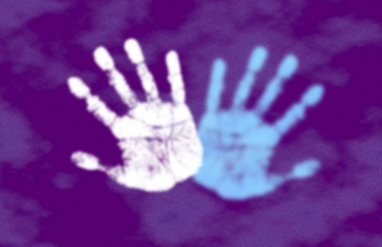Does your grandfather still call the fridge an “icebox”? Have you ever wondered why your mom calls the remote a “clicker”? Are you the kind of person who stubbornly still refers to your contact list as a “Rolodex”?
As technology advances, the language that we use changes. New inventions (and conventions) prompt most of us to abandon old-fashioned terms like icebox in favor of more modern ones like refrigerator. However, these terms mean roughly the same thing across generations. We are going to explore how these words changed and why. And, along the way, you might learn to understand your elders a wee bit better.
velocipede and bicycle
Before the bicycle, there was the velocipede. The early velocipedes came in a variety of designs with everything from one to five wheels. The first velocipede that was used widely was patented in 1818, the same year the word entered the English language. The word velocipede comes from the Latin velox meaning “swift” and ped meaning “foot.” The velocipede went mainstream in the 1860s, when the Michaux company developed and mass produced a two-wheeled, two-pedaled velocipede. In other words, a bicycle.
The word bicycle (early spellings include bysicle) is first found in an 1868 news article describing trendy Parisians riding around on them in the city. The word bicycle comes from Latin roots: bi meaning “two” and cyclus meaning “wheel.” The words velocipede and bicycle were used interchangeably for a number of years. However, by the late 1870s, as shown by Google Ngram results, velocipede was dropping out of favor.
The word velocipede continues to be used to refer generally to human-powered wheeled transport of all kinds, from unicycles to tricycles. In French, however, un vélo remains a common way to refer to a bicycle.
mixtapes and playlists
Back in the day, if you wanted to let someone know you liked them, you would make them a mixtape. Created using the highly sophisticated technology of a cassette tape, you’d tape songs off the radio (so you always missed the first couple seconds of the track) or from other tapes, CDs, or records you had. Mixtapes were the perfect compilations of songs to express your feelings.
The word mixtape was first used in the 1970s by rappers like Grandmaster Flash to describe the recordings they distributed to promote their work. The word went mainstream when cassette tape technology improved by the late 1980s and people could make mixtapes at home by recording collections of songs they liked.
When everything went digital, mixtapes became a thing of the past. Instead of recording songs off the radio, you could just create a playlist of songs digitally. The word playlist is actually older than mixtape. According to the Oxford English Dictionary, playlist appears as early as 1962 in reference to a list of plays to be performed. Playlist to mean “list of songs” is attested to by 1975. However, playlists became ubiquitous in the 2000s when the iPod and other early mp3 players allowed people to make digital collections of songs instead of mixtapes.
icebox and refrigerator
Innovations in keeping food cold have totally revolutionized the ways we eat. For millennia, people have used ice or snow to keep food cold. And so in the early 1800s, of course, an ice-box or icebox was the term used for the storage container that kept people’s food cold. The word is first used in the 1830s. This wooden cabinet contained a block of ice and cupboards for food.
The word refrigerator is much older than icebox. From the French refrigerateur, the word is attested to in English as early as 1611 to mean “something that cools.” By 1824, the word began to be used to describe machines that keep things cool, something that scientists had been experimenting with. It wasn’t until 1927 that General Electric successfully marketed an electric refrigerator for domestic use.
After the mid-1940s, use of the word icebox began to decline—just like the use of iceboxes themselves. However, that doesn’t stop some people who grew up with it from referring to a refrigerator as an icebox to this day.
picture show and movie
First coined in the Victorian Era (around 1865), picture show initially referred to an art exhibition. But by 1910, it meant motion picture—in other words, a show with moving images and (later) sound. Especially in the United States, picture show was used to describe motion pictures.
The word movie was first used around the same year, 1910. Movie is a shortened form of moving picture. According to Google Ngram results, for a few short years in the 1910s, picture show was a more commonly used term than movie in the United States. However, by 1915, its popularity began to level—and eventually drop—off. By the 1960s, use of picture show to mean movie had virtually disappeared.
If you have heard the term picture show, it’s probably from the title of one of two classic films: The Last Picture Show (1971) and The Rocky Horror Picture Show (1975).
Another term that often pops up when you talk about old-timey movies is nickelodeon. The word is a combination of nickel, as in an American five-cent piece, and odeon, from the ancient Greek oideion, meaning “theater.” While nickelodeon was first used to refer to a small museum in Boston in 1888, by 1905 it was used to refer to theaters that specialized in showing films. However, the meaning of the term was never entirely clear: did it refer to a museum? a movie theater? a jukebox? The term fell out of use quickly. However, we still know of it today thanks to the children’s television channel by the same name founded in 1977.
nylons, pantyhose, tights, and leggings
Wearing nylons or pantyhose—whatever you call them—is not as common these days as it once was. These sheer, stretchy stockings typically worn by women were all the rage when they were first shown at the 1939 New York’s World’s Fair. The original name, nylons, comes from the name of the material itself that it’s made of—nylon. This durable, lightweight, synthetic material was invented and named in 1938 by DuPont. The name nylon was entirely made up; the –on ending was supposed to evoke other fabrics, like cotton.
Nylons were so popular that when they first went on sale in 1940, women lined up around the block outside department stores to buy them. Today, stockings are still made from nylon, but they aren’t known as nylons. By 1963, advertisers were using the term panti-hose (later, pantyhose) instead. The name is a combination of panties (as in “underwear”) and hose (meaning “stocking”). It’s not clear why the change occurred—it’s possible that pantyhose sounded more modern than nylons. Whatever the reason, today pantyhose is much more common than nylons.
Tights, a term first seen in 1825, is also used as a synonym for pantyhose today. However, tights may refer to thicker wool or cotton undergarments, whereas pantyhose are made of nylon. Another word also used as a synonym for pantyhose is leggings, although some use leggings to refer to leg coverings that are even thicker than tights.
clicker and remote (control)
It might seem hard to believe, but once upon a time you had to stand up to change the channel on your television. Yes, those were dark days. But television viewers didn’t have to get minute amounts of exercise for long. In 1955, Zenith Radio Corporation invented a wireless television controller, a next-generation version of their “Lazy Bones” television controller. These early wireless television controllers had very big, clunky buttons that “clicked” when you pressed them. By 1974, they were known as clickers.
As technology has improved, and they no longer “click,” it is more likely that you know these television controllers as remotes or remote controls. This expression is actually much older than clicker. Remote control, in the sense of being able to control something from a distance, is documented as early as 1904 in reference to electricity. The term remote control was being used to describe television controllers by at least 1967.
PDAs and smartphones
Before everyone had a tiny computer in their pockets that made phone calls, sent emails, and held their contact lists (that’d be your smartphone), people had PDAs. You might think that PDA stands for “public display of affection” and that certainly is one possible interpretation. But in the ’90s and early 2000s, a PDA was a “personal digital assistant.”
The term PDA in this sense was first recorded in 1992. PDAs, such as the popular Blackberry, were somewhat similar to modern smartphones except they couldn’t make phone calls and they didn’t have the same plethora of applications. But, they could write and send emails, hold contact lists, and do other things useful for business professionals.
However, PDA’s moment in the sun was short-lived. The smartphone was fast on its heels. The term was found as early as 1992, and by 2002, smartphones were becoming more popular. Today, there are very few PDAs, but just about everyone has a smartphone.
Rolodex and contacts
Before it was easy or convenient to keep information digitally on our computers—or smartphones—people kept track of contacts on Rolodexes. The Rolodex was invented by Hildaur Neilsen and Arnold Neustadter in 1956. The name is a combination of rolling and index—which is exactly what it was. The Rolodex is essentially a rotating index card holder. Each index card holds the name and contact information of someone.
For decades, referring to someone’s Rolodex was shorthand for how connected they were.
The digital revolution made Rolodexes largely obsolete. Instead, people today store contact details on their smartphones on contact lists or in digital address books. However, the association between the term Rolodex and networking generally still remains. For instance, people will still talk about “going through their Rolodex” to look for someone to contact, even if that Rolodex today is generally metaphorical.
A more common way to refer to the people that you know today is as a contact. Whereas people once relied on their Rolodexes, today they simply rely on their contacts.
carbon copy, cc, and bcc
Along with Rolodexes, another technology that became largely obsolete in the digital era was the carbon copy. Carbon copies involve the use of carbon paper—a special kind of paper that contains carbon-black ink and wax—to transfer marks to another piece of paper. The first carbon copy experiments date to the early 1800s, but the expression carbon copy itself isn’t attested to until 1895.
In the office, carbon copies were handy ways to share information widely. If you had a document you wanted multiple people to read, you could send them a carbon copy; it was kind of like an early form of email. Carbon copy was later abbreviated simply to cc.
If cc looks familiar, that’s because while we no longer need carbon copies, we still have its ghost haunting our email. When you cc someone on an email, they receive a copy of it—no carbon paper required. You can also use cc as a verb, as in, “I cc’d my boss on this exchange.”
A different, but related, expression is bcc. This acronym stands for blind carbon copy. This means that someone is being sent a copy of the email, but the other recipients cannot see who it is.
Technology changes rapidly. Words and expressions that we take for granted today, like selfie and Uber, might well become as obscure as velocipede in a hundred years. It’s anyone’s guess.














